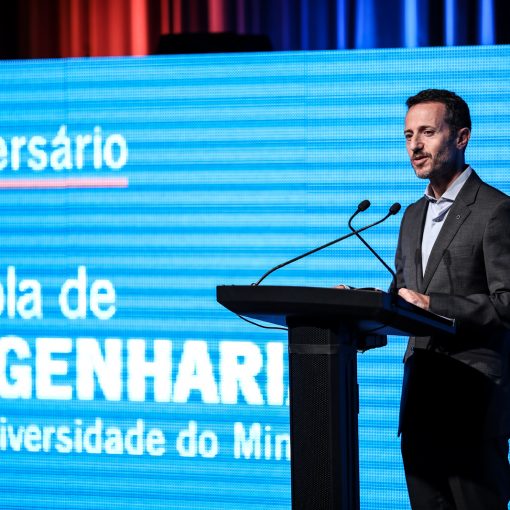On the afternoon of 5th March, the Collaboration Protocol between the Municipality of Guimarães and CEiiA, which lays the foundations for the commitment to set up the Guimarães Space Hub, was signed in the auditorium of the Jordão Theatre.
The “New Space” was the main theme of the speeches made by the participants at the session to sign the protocol between the Municipality of Guimarães and the CEiiA, the aim of which is to set up a technological hub dedicated to aerospace research and the “Atlantic Operations Centre” to operate the Atlantic Constellation, a set of 30 satellites that are expected to be in Earth orbit by the end of 2026.
The “Guimarães Space Hub” is a project that will have one of its main objectives in stimulating cooperation in the space sector, centred on business, teaching and research, and aims to boost a set of new collaborative dynamics in the territory that can orbit around the aerospace economy. Domingos Bragança, the city’s mayor, referred to the strategic importance of science and knowledge for the development of the region and recalled the decisive role played by António Cunha, who, when drawing up the Action Plan for the Economic Transition of the Municipality of Guimarães, had already foreseen that the region could play a decisive role in the area of space, which is now beginning to materialise.
The new technological hub will also benefit from the invaluable contribution of the University of Minho’s Bachelor’s and Master’s degrees in Aerospace Engineering, presented by the president of the School of Engineering, Pedro Arezes, which will move to a new “home” after the rehabilitation and refunctionalisation of the former Arquinho Factory in Caldeiroa, whose architectural project was also presented during the session and whose tender for the work should be launched at the end of this semester. The contribution of José Rui Felizardo, CEiiA’s CEO, is seen as fundamental to the success of the “Guimarães Space Hub”, due to the vision and knowledge he demonstrates in leading one of Europe’s most important research and product development centres.
The afternoon was also dominated by the success of the MH-1 launch, which was followed by most of those present last night at the CEiiA facilities in Matosinhos, with António Cunha, president of the CCDR-N, saying that a path is being built that the CCDR-N “cherishes” and whose results “are beginning to be evident”. During the session, several key players in the area of the new space economy also spoke, such as Ricardo Conde, president of the Portuguese Space Agency, Rui Magalhães, from CEiiA, André Oliveira, from N3O, and Francisco Cunha, from Geosat, who analysed the “state of the art” in Portugal and projected the future.
At the end of the session, José Rui Felizardo addressed the dozens of Aerospace Engineering students in the auditorium, asking them to design their future. “We set the trends,” he said. CEiiA’s chief executive made it known that one of the focuses of the institution he heads is the young people who are now studying Aerospace Engineering at UMinho, expressing an interest in making contact with them “as soon as possible”. To this end, a second protocol was signed involving the University of Minho and CEiiA. On this subject, Rui Vieira de Castro, the rector of UMinho, said that the university was committed to consolidating and affirming aerospace, at what he considers to be a time when “unique conditions” are being created for building the future.
Report:



